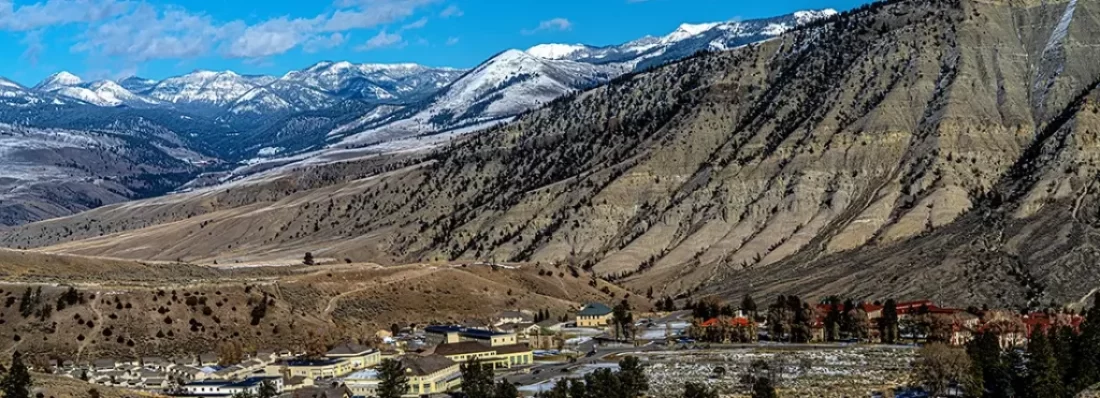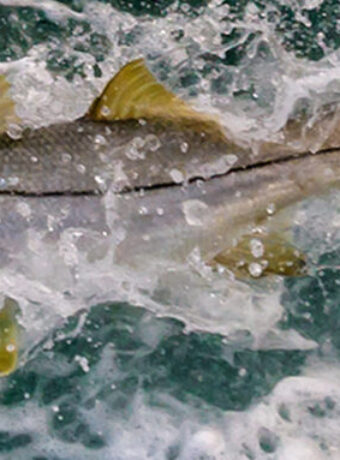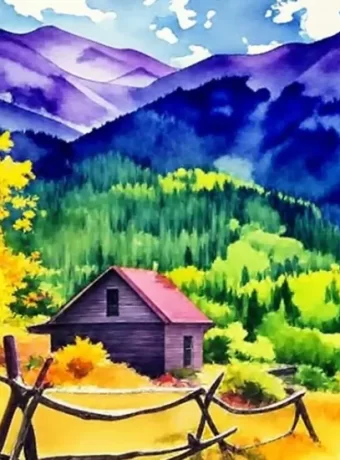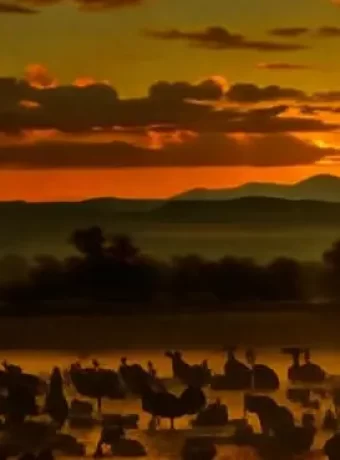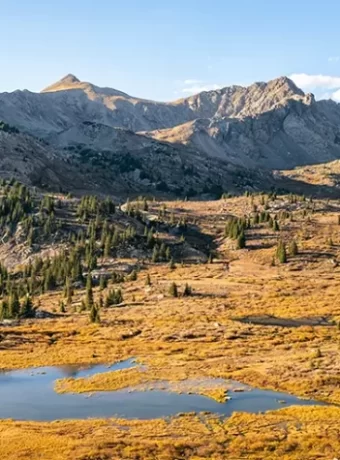Exploring the Rich History of Fort Yellowstone: A Guide
Have you ever wondered about the stories behind Yellowstone’s old buildings? The history of Fort Yellowstone is a fascinating chapter in the park’s tale. It’s more than just old stone and wood; it’s a place where soldiers protected a brand new idea: a national park. Uncovering the history of Fort Yellowstone reveals a crucial time for America’s wild places and the beginnings of the park service.
Table of Contents
The Wild West’s New Idea: Yellowstone Park
Yellowstone became the world’s first national park way back in 1872. This was a bold move for the United States, setting aside a vast tract of the Montana Territory and Wyoming Territory. Imagine establishing this huge piece of land primarily for people to enjoy its wonders, a revolutionary concept at the time.
Declaring Yellowstone Park a protected area was one thing; actually safeguarding it proved much harder. In those early years, Yellowstone was vulnerable. Poachers killed animals, particularly bison and elk, with alarming frequency. Souvenir hunters broke large pieces off delicate formations, causing irreparable damage to the geysers and hot springs formation.
People even started businesses and developers set up camps right inside the park boundaries with little oversight. The first civilian superintendents had good intentions but lacked the resources and authority. These early administrators faced an uphill battle, as legislators refused to allocate sufficient funds for effective protection, leaving the park vulnerable.
It quickly became clear that this amazing place needed serious protection. Otherwise, the geothermal features and wildlife that made Yellowstone special would be severely harmed. Something had to change to preserve the park for the future.

Soldiers to the Rescue: The Army Arrives
By 1886, the situation in Yellowstone was dire. The Department of the Interior, responsible for the park’s administration, struggled significantly. Congress remained unwilling to provide adequate funding for proper management and protection.
As a last resort, the government turned to the U.S. Army. In August 1886, Company M of the 1st U.S. Cavalry, under the command of Captain Moses Harris, arrived from Fort Custer in the Montana Territory. Captain Moses Harris was tasked with bringing order to the park.
They established a temporary camp near Mammoth Hot Springs, calling it “Camp Sheridan.” This name honored Lieutenant General Philip Sheridan, a Civil War hero and advocate for the national park concept who had witnessed the destruction firsthand. Captain Moses and his men began the challenging task of policing the vast wilderness.
Initially, many believed the Army’s presence would be temporary. However, these soldiers initiated a new era of conservation management. They brought the authority and discipline desperately needed to curb the widespread issues of poaching and vandalism, establishing the foundation for how the army administered the park for three decades.
Building a Fort: The Birth of Fort Yellowstone
After several years operating out of the temporary Camp Sheridan, it was apparent the Army’s role in Yellowstone was not short-term. Living in tents and basic wooden structures proved difficult, particularly during the harsh Wyoming winters. In 1891, Congress authorized funds for a permanent military post, marking the official beginning of Fort Yellowstone.
Construction commenced immediately in the Mammoth Hot Springs area. This location in the northwestern portion of the park was strategically chosen due to its existing role as an administrative center and its relatively level terrain suitable for building. Over the following two decades, the fort significantly expanded as more buildings built were added.
Sturdy barracks housed enlisted soldiers, while officers received separate, often grander, officers’ quarters. Essential support structures, including a guardhouse, large stables for cavalry horses, a bakery, a hospital, laundry facilities, and eventually a chapel, were erected. Most buildings were constructed using local sandstone, giving them a distinct appearance that harmonizes with the surrounding landscape. By the early 1900s, Fort Yellowstone resembled a well-established military installation.
Daily Life and Duties at the Fort
Life for soldiers stationed at Fort Yellowstone revolved around a unique mission: protecting the natural and geothermal wonders of Yellowstone National Park. This was a departure from typical military duties. In effect, these cavalrymen became some of America’s first park rangers, tasked with conservation enforcement.
Soldiers conducted extensive patrols throughout the vast park, often covering rugged terrain on horseback. Their primary duties included apprehending those involved when poachers killed animals, deterring vandalism, and preventing souvenir hunters who broke large formations. They enforced the developing park regulations, assisted with suppressing forest fires, and even served as guides for early tourists visiting features like Old Faithful.
These men endured severe weather, isolation during long patrols, and occasionally hazardous encounters with both wildlife and lawbreakers. Their persistent efforts significantly reduced illegal activities and established effective management practices. The systems they implemented formed the bedrock of park protection strategies, influencing the future National Park Service.
The Architecture of Protection: Fort Yellowstone’s Layout
The layout of Fort Yellowstone generally followed the standard military post design of the late 19th century. Key buildings were typically arranged around a central parade ground used for drills, assemblies, and ceremonies. Officers’ Row featured the generally two-story residences for commissioned officers, reflecting their rank.
Enlisted men resided in larger, functional barrack buildings designed for communal living. Other vital structures included the post hospital, bakery, blacksmith shop, granary, and extensive stables necessary for a cavalry post. The chapel, constructed in 1913, represents one of the last major structures built during the Army era and showcases a rustic architectural style.
The predominant use of locally quarried sandstone for many buildings built gave the fort a cohesive aesthetic that blends well with the surrounding environment of the Yellowstone-Mammoth Hot Springs area. Some structures featured distinctive red roofs. Today, approximately 35 of these original Army-era structures remain, forming the core of the historic landmark district.
A Deep Dive into the History of Fort Yellowstone
The history of Fort Yellowstone covers a critical transitional period for the park. The Army’s arrival in 1886, spearheaded by figures like Captain Moses Harris, brought immediate stability. Their presence effectively deterred much of the blatant poaching where poachers killed animals and the vandalism where hunters broke large pieces from formations.
The initial phase at Camp Sheridan focused on establishing authority and control. With the commencement of Fort Yellowstone construction in 1891, the Army’s commitment became solidified. Captain George S. Anderson, who served as acting superintendent for several years, was instrumental during this period, establishing crucial park protection policies.
Over the subsequent two decades, the fort grew in size and troop strength. The military infrastructure expanded to support the mission, including building roads and trails which improved access and patrol capabilities. Soldiers explored and mapped remote sections of Yellowstone Park, contributing valuable knowledge about the region and making travel safer for the increasing number of visitors drawn to the national park hot springs and geysers.
The Army’s tenure was not without difficulties. They contended with brutal winters, logistical challenges, resource limitations, and the inherent difficulty of safeguarding such a vast and wild area. Interactions with remnant Native American groups, although less frequent by this time, also formed part of the historical context. Despite these challenges, their dedicated service created a robust foundation for preservation, demonstrating that active, on-the-ground management was essential for protecting places like Yellowstone National.
A New Guardian: Transition to the National Park Service
For thirty years, the U.S. Army served as the stewards of Yellowstone. However, managing national parks was not the military’s core mission. As the number of national parks grew across the nation, momentum built for creating a specialized civilian agency dedicated solely to park management.
This movement culminated in the passage of the Organic Act in 1916. This landmark legislation created the National Park Service (NPS). The new agency’s mission was explicitly defined: to conserve the scenery, natural objects, historic objects, and wildlife within the parks and to provide for public enjoyment in a manner that leaves them unimpaired for future generations.
Organizing the new park service took time. In 1918, the Army formally transferred control of Yellowstone to the NPS. This transition was relatively smooth, partly because many of the first NPS rangers were former soldiers who had served at Fort Yellowstone, bringing valuable field experience. The fort itself transitioned seamlessly into the headquarters for the new park’s administration, a function it retains to this day, ensuring the Army’s legacy continued under the new park service banner.
Fort Yellowstone Today: A Living Piece of History
Following the Army’s departure, Fort Yellowstone did not fade away; instead, it evolved. It became the central administrative hub for Yellowstone National Park under the National Park Service. Many of the historic stone and wood buildings are still actively used for park operations.
One prominent highlighted building is the former Bachelor Officers’ Quarters, now home to the Albright Visitor Center & Museum at Mammoth Hot Springs. Named after Horace M. Albright, a pivotal figure in the NPS’s formation and an early Yellowstone superintendent, the Albright Visitor center offers exhibits on park wildlife, geology, and human history, including the significant Army era. The Albright Visitor desk is an excellent starting point for park exploration.
Recognizing its profound significance in American conservation history, Fort Yellowstone was designated a National Historic Landmark in 2003. This area is also part of the larger Fort Yellowstone-Mammoth Hot Springs Historic District. Visitors can walk through this historic landmark district, observe the distinct architecture, read interpretive signs detailing the original functions of the structures remain, and absorb the atmosphere of a place central to national park history. It stands as a living landmark, connecting the foundations of park protection to contemporary operations and visitor experiences near locations like West Yellowstone.
Exploring Around the Fort: The Mammoth Hot Springs Area
Fort Yellowstone is situated within the captivating Mammoth Hot Springs area in the northern part of Yellowstone. This region offers a unique combination of geothermal wonders, historical significance, and wildlife viewing opportunities. There is much to see and experience near the fort, part of the yellowstone-mammoth hot springs historic district. Learn more about the Greater Yellowstone Eco-system.
Mammoth Hot Springs Terraces
These travertine terraces are the geological centerpiece of the Mammoth Hot area. Hot water carrying dissolved calcium carbonate surfaces and deposits the mineral as it cools, creating intricate, ever-evolving step-like formations. Boardwalks provide access through the Upper and Lower Terraces, allowing close views of features like Liberty Cap (a dormant hot spring cone) and the colorful Minerva Terrace. Witnessing this active hot springs formation is a highlight of any Yellowstone visit.
Albright Visitor Center
Located within a historic Fort Yellowstone building (the former Bachelor Officers’ Quarters), this visitor center is essential. It provides maps, park information, ranger programs, and informative exhibits. Learning about the Army’s role here adds context after understanding the fort’s history. This is the main visitor center for the northern range.
Fort Yellowstone Historic District
Embark on a self-guided walking tour through the Fort Yellowstone-Mammoth Hot Springs Historic District. Signs identify many buildings and explain their original military functions, such as the guardhouse, chapel, officers’ quarters, and barracks. Wandering these grounds offers a tangible connection to the past and the park’s army administered origins.
Wildlife Viewing Opportunities
The Mammoth Hot Springs area provides excellent chances to see wildlife. Elk are particularly abundant and frequently seen grazing on the lawns surrounding the Fort Yellowstone buildings or even walking through the developed area. Bison, mule deer, and pronghorn are also commonly spotted in the vicinity. Early morning and late evening generally offer the best viewing opportunities.
Roosevelt Arch
Located just outside the park’s North Entrance in Gardiner, Montana, the iconic Roosevelt Arch serves as a grand entryway. Dedicated by President Theodore Roosevelt in 1903, its inscription, “For the Benefit and Enjoyment of the People,” echoes the national park mission. It’s a popular photo spot and a symbol of American conservation.
The Earth’s Plumbing: Mammoth Hot Springs Geology
The Mammoth Hot Springs terraces represent a remarkable geological phenomenon, a distinct type of springs formation. The process begins with precipitation—rain and snowmelt—that percolates deep underground. There, the water is heated by the residual heat from the Yellowstone volcanic system, the same source powering the park’s famous geysers.
This heated water then ascends, passing through layers of ancient limestone deposited by seas that covered this area millions of years ago. As the hot water flows through the limestone, it dissolves calcium carbonate. When this mineral-laden water emerges at the surface, it cools rapidly upon contact with the air.
As the water cools, it can no longer hold the dissolved calcium carbonate, causing the mineral to precipitate out as travertine, a form of limestone. This travertine deposition slowly builds the intricate terraces, layer upon layer, creating the stunning visual landscape seen today. The very ground Fort Yellowstone occupies, known as Hotel Terrace, is part of an older, inactive terrace system, underscoring the dynamic nature of this hot springs formation.
Keeping History Alive: Buildings and Needed Repairs
The historic structures remain at Fort Yellowstone bear witness to over a century of history. Enduring harsh Wyoming weather cycles has inevitably taken a toll. Preserving these buildings, which form the heart of the national historic landmark district, is a continuous and significant undertaking for the National Park Service.
Thanks to ongoing preservation efforts, most buildings are in relatively good condition. However, maintenance challenges persist, such as weathered materials, paint deterioration, and structural stresses accumulated over time. Constant care is required to keep these buildings safe, functional, and historically authentic, especially since many still house park offices and visitor services like the Albright Visitor center.
Recent funding initiatives, such as the Great American Outdoors Act, are providing critical resources to address deferred maintenance projects across national parks, including Yellowstone. For Fort Yellowstone, this support enables vital repair work, including exterior restoration, foundation stabilization, and modernization of utility systems. These efforts carefully balance historic preservation mandates with the practical needs of a working administrative center, helping to safeguard this national historic site for future generations.
Hit the Trails: Hiking Near Mammoth Hot Springs
The landscape surrounding Fort Yellowstone and Mammoth Hot Springs offers diverse hiking opportunities. Trails range from easy boardwalk strolls suitable for families to more demanding climbs providing panoramic vistas. Exploring these trails enhances appreciation for the natural beauty and scale of Yellowstone National Park.
Remember essential safety precautions when hiking in Yellowstone. Always carry bear spray and know how to use it effectively. Make noise while hiking, travel in groups if possible, bring sufficient water and snacks, and dress in layers to adapt to rapidly changing weather conditions.
Here’s a summary of popular trails in the area:
- Mammoth Hot Springs Terraces Boardwalks: An easy 1.75-mile network of boardwalks and stairs providing close-up views of the active travertine terraces like Canary Spring. Accessible year-round (winter conditions may require traction devices).
- Bunsen Peak Trail: A moderate-to-strenuous 4.6-mile roundtrip hike climbing about 1,300 feet to summit views of the surrounding valleys and mountains. Best in summer/fall.
- Wraith Falls Trail: An easy, mostly flat 1-mile roundtrip walk leading to the lovely 100-foot Wraith Falls on Lupine Creek. Great for families.
- Beaver Ponds Loop Trail: A moderate 5-mile loop starting near the Mammoth Hotel, passing through forests, meadows, and by several beaver ponds. Offers good wildlife viewing potential.
- Lava Creek Canyon Trail: A moderate 7-mile out-and-back trail following Lava Creek into its canyon, passing Undine Falls and offering scenic canyon views through sagebrush and forest.
- Osprey Falls Trail: A strenuous 9-mile roundtrip hike involving a steep 800-foot descent into Sheepeater Canyon to view the spectacular 150-foot Osprey Falls. Recommended for experienced hikers.
Starting hikes early in the morning often means fewer crowds and increased chances of spotting wildlife active during cooler parts of the day. Checking trail conditions at a visitor center before heading out is always recommended. Consider the drive time to nearby areas like West Yellowstone when planning longer excursions.
Fly Fishing Around Fort Yellowstone Area
Did you know you can enjoy great fly fishing near Fort Yellowstone? The Yellowstone area gives anglers chances to catch trout. This includes spots near Mammoth Hot Springs.
Gardner River
The Gardner River flows near Mammoth Hot Springs. It offers some cool fly fishing. This river has brown and rainbow trout. Anglers like to fish here because of the scenery and the fish.
Nearby Creeks and Rivers
Several other creeks and rivers near Fort Yellowstone also have good fishing. These spots might need a bit of a hike to reach. But the chance to fish in peace is worth it. Learn more about Fly Fishing Yellowstone National Park.
Here are a few spots:
- Soda Butte Creek
- Lamar River
- Yellowstone River
Regulations and Permits
Make sure you know the rules before you fish. Yellowstone National Park needs a fishing permit. Check current regulations on limits, and tackle. These rules help keep the fish around for years to come.
Tips for Fly Fishing
Want to get the most out of fly fishing around here? Here are a few tips:
- Ask local fly shops for advice. They know what flies the fish are biting.
- Fish early or late in the day. The fish are more active then.
- Watch the water levels. Clear water is best for fly fishing.
The fly fishing near Fort Yellowstone is some of the best. You get stunning views and great fishing. So grab your gear and head out to Yellowstone!
Conclusion of History of Fort Yellowstone
The Mammoth Hot Springs area, anchored by the historic Fort Yellowstone, provides a rich blend of natural wonders and cultural history. Visitors can trace the evolution of park management by exploring the fort’s grounds and the highlighted building housing the Albright Visitor Center. Just steps away, the dynamic geology of the Mammoth Hot Springs terraces offers a stunning display of Earth’s artistry.
Nearby trails invite exploration and offer chances for solitude and wildlife encounters, from easy walks to challenging climbs. Understanding the history of Fort Yellowstone deepens the visitor experience, forging a connection to the Army soldiers and early park service pioneers who protected this national treasure. Fort Yellowstone stands as a powerful testament to the enduring spirit of conservation in one of America’s most iconic landscapes, the greater Yellowstone ecosystem.
